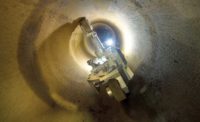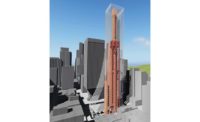On April 16, 2009, President Barack Obama announced plans for a high-speed railway system in the U.S. saying it would create thousands of jobs and conserve energy. The system will "change the way we travel in America," said Obama and he identified $8 billion from the recently enacted economic stimulus package as a down payment on the rail system. The Administration's vision was further elaborated on in their April 2009 release of the "Vision of High Speed Rail in America" that begins to lay out a framework and process for the development of HSR.
I believe that the President�s decision to make high-speed passenger rail service a centerpiece of his transportation agenda is a good one and the $13 billion in funds he will allocate to the project over the next five years is a worthwhile investment�if spent wisely.
This commitment of federal investment and leadership for the development of high-speed rail is a �game changing� event that can lay the foundation for the most significant national investment in public infrastructure since President Eisenhower�s vision to build a national interstate highway system. Even the sobering General Accounting Office Report on High Speed Rail released in March 2009 recognizes the benefits of HSR to the �riding� and �non-riding� public with a clear message that its success depends on significant federal funding and leadership.
Americans are beginning to recognize that our country needs high-speed rail as part of a balanced transportation system. It has been the missing lynchpin in our national network. Without it, the whole system is less effective.

GERTLER
High-speed rail will benefit the country in a variety of ways, including improved mobility, job creation, reduced usage of fossil fuel and fewer annual greenhouse gas emissions. High-speed trains use one-third as much energy as comparable air travel and consume less than one-fifth as much energy as driving. This is proven technology that America can adopt and protect its status as a mobility super power.
For more than 40 years, with the exception of the Acela, the United States has not been able to implement high-speed rail while other countries developed, ran, and are retiring their first high-speed trains to museums. European countries have made substantial public investments in their high-speed and passenger rail systems. According to an April 2005 study on public budget contributions to railways, commissioned by the European Union, in just one year (2003), France invested $10.6 billion in its rail system; Germany $12.4 billion; Italy $7.9 billion; the United Kingdom $7.8 billion; the Netherlands $2.5 billion; Austria $2.3 billion; Switzerland $1.9 billion; Sweden $1.7 billion; Spain $1.3 billion; and Denmark $1.2 billion - totaling almost $50-billion!
Outside of Europe, Japan invests about $2 billion annually to its Shinkansen and, according to the Ministry of Railways, China has launched a plan to spend a total of $162 billion to expand its railway system.
There is no reason why we cannot do the same here in the United States. With new funding and renewed vision, more Americans will be able to appreciate the value of this transformative transportation alternative.
The stimulus and proposed FY10 monies clearly will not be sufficient to fund the construction of all, or even most, of the 10 designated Federal Railway Administration HSR corridors and others being considered�California�s program alone is estimated to cost in the order of $40 billion. However, these monies will provide a significant opportunity to advance the development of these projects as permanent federal funding is secured, possibly as part of the new Transportation or Greenhouse/Carbon Authorization bills, and local funding and where appropriate private financing and investment.
In addition to these monies supporting critical design and engineering and other works necessary to progress these corridors for �project readiness� in time for the new authorization bills, these funds can be used to construct portions of HSR corridors currently being proposed, such as upgrading the Milwaukee to Madison section of the Midwest Regional Rail Initiative to 110 mph, or the Albany to Buffalo section in New York State or, fast tracking hundreds of grade separations and other ready to go projects required on the California program. These monies will fund significant jobs now and bring safety, reliability and other infrastructure improvements immediately, as well as improvements to our communities for generations.
The investment must not be wasted on bogus projects, programs and superficial studies. I support the GAO�s finding and recommendation that a national strategic vision of how HSR fits into our transportation system and clear guidance for the development of tools and systems to assess its visibility will ensure this funding be spent wisely, and future generations will look at this Administration�s HSR program and the Administration's recently released Vision for the development of HSR as visionary and game changing.



Post a comment to this article
Report Abusive Comment